Invited Plenaries
-
Prof Marcia Barbosa, Universidade Federal do Rio Grande do Sul, Brazil

Marcia Barbosa is a physicist working in water. She is also the director of the Physics Institute from the Universidade Federal do Rio Grande do Sul, vice-president of the International Union of Pure and Applied Physics and member of the council of the American Physical Society and Brazilian Physical Society. Marcia was awarded with the 2009 Nicholson Medal of the American Physical Society and the 2013 Loreal-Unesco prize of Women in Science. Marcia graduated more than 20 students and has more than 100 publications in her research in physics and in gender issues.
Plenary Title: Women and Physics: Why so few?
Abstract
Slides PDF
-
Prof Megan Donahue, Michigan State University, United States of America
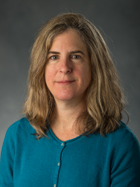
Megan Donahue has a physics S.B. degree from MIT (1985) and a Ph.D. in astrophysics from the University of Colorado, Boulder (1990). Donahue completed five years of post-doctoral research in observational astronomy at the Observatories of the Carnegie Institution of Washington, in Pasadena, California and at the Space Telescope Science Institute (STScI) in Baltimore, Maryland. In 1995, Donahue joined the science staff at STScI, continuing her research on clusters of galaxies and cosmology, while providing scientific guidance for the Hubble Space Telescope data archive and scientific development for the James Webb Space Telescope. Donahue has been a professor at Michigan State University in East Lansing, Michigan in the physics and astronomy department since 2003, where she carries on research on clusters of galaxies, the physics of gas and galaxy formation, and dark matter. She teaches large astronomy classes, mentors graduate students, and participates in a significant number of national and international science advisory committees, including the International Astronomical Union's Office of Astronomy for Development in Cape Town, South Africa (2010-2014), the US National Academy of Science Committee on Astronomy and Astrophysics (2013-2015), the WFIRST Science Definition Team (2011-2015), the Giant Magellan Telescope Science Advisory Committee (2008-2014), and the Astro-2010 Decadal Survey Electromagnetic Observations from Space Prioritization Panel. She is also an author of a best-selling college-level introductory astronomy textbook series called The Cosmic Perspective, published by Pearson, together with co-authors Jeffrey Bennett, Nicholas Schneider, and Mark Voit.
Plenary Title: Dark Matter in Clusters of Galaxies: Views from Hubble, Chandra, and Newton
Abstract
Slides PDF
-
Prof Vladimir Dyakonov, Julius Maximilian University of Würzburg, Germany

Vladimir Dyakonov received his Diploma in physics from the University of St. Petersburg, the Ph.D. degree in physics from the A. F. Ioffe Physico-Technical Institute, St. Petersburg, Russia in the Department of Solid State Physics, and the Habilitation degree in experimental physics from the University of Oldenburg, Oldenburg, Germany. Since 1990, he has been a Visiting Researcher at the Universities of Bayreuth (Germany), Antwerp (Belgium), and Linz (Austria). Since 2004, he has been full professor and the chair of Experimental Physics VI, Institute of Physics, Faculty of Physics and Astronomy, Julius-Maximilian University of Würzburg, Germany, and also the chairman of the board of the Bavarian Centre of Applied Energy Research (ZAE Bayern). In 2010 he has been the spokesman of German Renewable Energy Research Association (FVEE). His main research interests comprise investigations of functional materials for renewable energy and energy efficiency technologies.
Plenary Title: Organic and hybrid organic-inorganic concepts for photovoltaic energy conversion
Abstract
Slides PDF
-
Prof Andrew Forbes, CSIR

Andrew Forbes received his PhD (1998) from the University of Natal, and subsequently spent several years working as an applied laser physicist, first for the South African Atomic Energy Corporation, and then later in a private laser company where he was Technical Director. He is presently Chief Researcher at the CSIR National Laser Centre and is the Research Group Leader of the Mathematical Optics Group. Andrew sits on several international conference committees, chairs SPIE’s International Conference on Laser Bean Shaping and is Char of the OSA’s Diffractive Optics and Holography technical group. He hols honourary Professorships from three universities, serves on many national and international panels, has published over 200 technical papers, and is an active populariser of science. His interests include laser beams and resonators, digital holography, orbital angular momentum, and quantum optics.
Plenary Title: Tailoring light with digital holograms
Abstract
Slides PDF
-
Prof Eric Fullerton, University of California, San Diego, United States of America
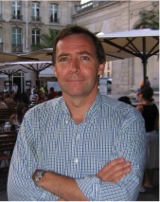
Eric Fullerton is a Professor of Electrical and Computer Engineering and NanoEngineering at University of California, San Diego. He is also the holder of an Endowed Chair and is Director of the Center of Magnetic Recording Research. He received his B.Sc. in physics from Harvey Mudd College in 1984 and his Ph.D. in physics from University of California, San Diego in 1991. Prior to joining UCSD, Prof. Fullerton held research positions at Argonne National Laboratory, IBM Almaden Research Center and Hitachi GST. He has co-authored more than 270 papers in refereed journals and holds 51 US patents. His awards include the Argonne Exceptional Performance Award, Fellowship in the American Physical Society and the IEEE, the IBM Outstanding Technical Achievement Award, the Hitachi GST Gold Patent, Docteur Honoris Causa from Universite Henri Poincare, and the AIP Prize for Industrial Applications of Physics.
Plenary Title: Bits of the future: emergent physics for advanced magnetic information technologies
Abstract
Slides PDF
-
Prof Justin Jonas, SKA and Rhodes University
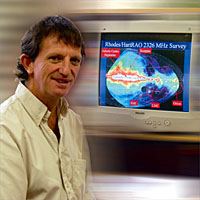
Justin Jonas is currently Associate Director, Science and Engineering, of the SKA project (South Africa), as well as Professor of Physics, in the Department of Physics and Electronics, Rhodes University. He obtained his PhD from Rhodes University in 1999, while serving as Research Officer in radio astronomy. His expertise is in radio astronomy and also in the instrumentation of radio telescopes, and he has been central to the development of the MeerKat and SKA projects.
Plenary Title: The Square Kilometre Array, MeerKAT and more
Abstract
Slides PDF
-
Prof Cedric Linder, Uppsala University, Sweden
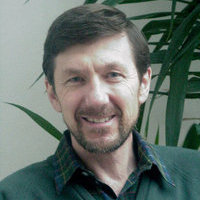
Cedric Linder is Professor of Physics Education Research, Division of Physics Education Research, Department of Physics and Astronomy, Uppsala University, Sweden, Professor of Physics Education, Department of Physics, University of the Western Cape, South Africa, and Guest Professor of Science Education, Faculty of Health and Life Sciences, Linnaeus University, Sweden. He studied physics and physics education at Rhodes, Rutgers, and the University of British Columbia where he obtained his doctorate looking at challenges that graduate physics students experience with understanding sound. His experience with teaching physics spans 33 years, during which he has become well known for pioneering many things. Two of these are: firstly, a new approach to teaching physics that calls for the explicit incorporation of conceptual physics into both service and mainstream physics; and secondly, the inclusion of theory building in the field of Physics Education Research as a way to better inform teaching practice aimed at improving physics learning experiences and their outcomes. His current work is embedded in viewing learning as an emergent phenomenon in a complex adaptive system, and exploring disciplinary representational issues in the teaching and learning of physics and astronomy.
Later this year, at the 2014 International Conference on Physics Education, Córdoba, Argentina in August, Cedric Linder will be receiving the International Commission on Physics Education (Commission 14 of the International Union of Pure and Applied Physics) ICPE Medal for 2014 in recognition of his outstanding contributions to physics education.
Plenary Title: New ways of thinking about university physics teaching: A discussion of discursive representations using South African examples
Abstract
Slides PDF
-
Prof Harm Moraal, Northwest University
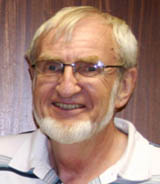
Harm Moraal was born in the Netherlands. He was educated at the erstwhile Potchefstroom University for CHE, and was awarded his PhD there in 1974. He remained in the Department of Physics at Potchefstroom/North-West University, where he was promoted to professor in 1985, and served as Head of Department/Director of School from 1991 to 2002. His research focuses on cosmic rays in the heliosphere, as modulated by solar activity. This is one of many branches of Particle Astrophysics. He started with experimental topics back in the early 1970s, then moved on to theoretical and numerical explanation of observations, and then back again to experimental work, with a strong focus on experiments in Antarctica. He currently teaches courses in Thermodynamics; Statistical Mechanics; and Science, Technology and Society.
Plenary Title: Particle Astrophysics
Abstract
Slides PDF
-
Prof Miles Padgett, University of Glasgow, Scotland
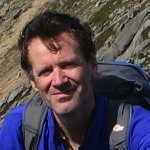
Miles Padgett holds the Kelvin Chair of Natural Philosophy at the University of Glasgow in Scotland. His group has pioneered the understanding of light's momentum, including conversion of optical tweezers to optical spanners, the opportunity for angular momentum in optical communication, and demonstrating an angular form of the quantum EPR paradox. In recognition of this work, in 2008 Miles was awarded the Institute of Physics Optics and Photonics Prize, in 2009 the Young Medal and Prize for “pioneering work on optical angular momentum” and in 2014 the Kelvin Medal of the Royal Society of Edinburgh.
Plenary Title: Light in a twist: optical angular momentum
Abstract
Slides PDF
-
Prof Toshimi Suda, Tohoku University, Japan
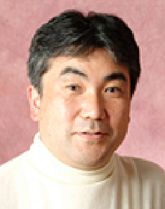
Toshimi Suda received his PhD from Tohoku University in 1988 in the field of intermediate energy photonuclear physics. After a brief postdoctoral fellowship at the RCNP, Osaka University, he returned to Tohoku University as a research associate from 1989 to 1999, during which time he also held a von Humboldt scholarship to work at the Technical University, Darmstardt, Germany. From 1999 he was vice Chief Scientist at the Nishina Centre for Accelerator-based Science at RIKEN, near Tokyo, and was in charge of their radioactive beams. In 2010, he returned to Tohoku University as Professor at the Research Centre for Electron-Photon Science. His research interests are in radioactive nuclei, and is in charge of the SCRIT project, to measure electron scattering form factors from exotic nuclei.
Plenary Title: The SCRIT Electron Scattering Facility
Abstract
Slides PDF
-
Prof Emmanuel Tsesmelis, CERN and University of Oxford, England
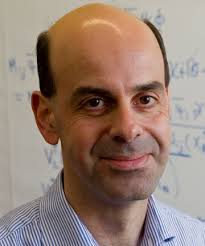
Emmanuel Tsesmelis is an experimental particle physicist with a career spanning scientific research, academic teaching, science communication, international relations and management at CERN and at several universities. He is a Senior Physicist and Deputy Head of International Relations in CERN’s Directorate-General Unit and a Visiting Professor in Particle and Accelerator Physics at the University of Oxford. He is an elected Fellow of the Australian Institute of Physics and a supernumerary member of Jesus College, Oxford. He works closely with the SA-CERN programme.
He obtained his BSc. (Hons) and MSc. from the University of Melbourne. He then moved to the University of Dortmund, Germany, where he obtained his PhD on searches for the Higgs boson in the data obtained by the UA2 experiment at CERN. From 1993 to 1998, he worked on the neutrino programme at CERN - NOMAD and CNGS - after which he joined the CMS experiment at the LHC. During 2005 to 2008, he was Head of the LHC Experimental Areas. From 2009, he has been a member of the CERN Directorate.
Plenary Title: CERN – A Gateway to Science and Technology
Abstract
Slides PDF
-
Dr Amanda Weltman, University of Cape Town

Developing a new theory to help solve challenges in cosmology is not a task to be taken lightly. However, this has not stopped Dr. Amanda Weltman who has, through her work on the chameleon mechanism, which she co-proposed with Dr. Justin Khoury, generated considerable interest and created an entirely new sub-field of cosmological research.
Dr. Weltman obtained her B.Sc. and Honours degrees from the University of Cape Town, and her MSc, MPhil and PhD from Columbia University in New York under the supervision of Brian Greene. She has specialised in the fields of cosmology, string theory and theoretical physics.
The biggest impact of Dr. Weltman’s work is the proposal of a new kind of particle and interaction – the so-called chameleon fields which provides a unique method of explaining dark energy. It
is also one of only three proposed mechanisms for hiding dark energy-mediated fifth forces.
Dr Weltman has worked as a postdoctoral researcher at the Centre for Theoretical Cosmology, run at the time by Stephen Hawking, at Cambridge University. She is now a Senior Lecturer in the Department of Mathematics and Applied Mathematics at UCT.
-
Prof. Steven Karataglidis, University of Johannesburg
Plenary Title: Paved with good intentions: the road to Scientific Misconduct
Abstract
Slides PDF

